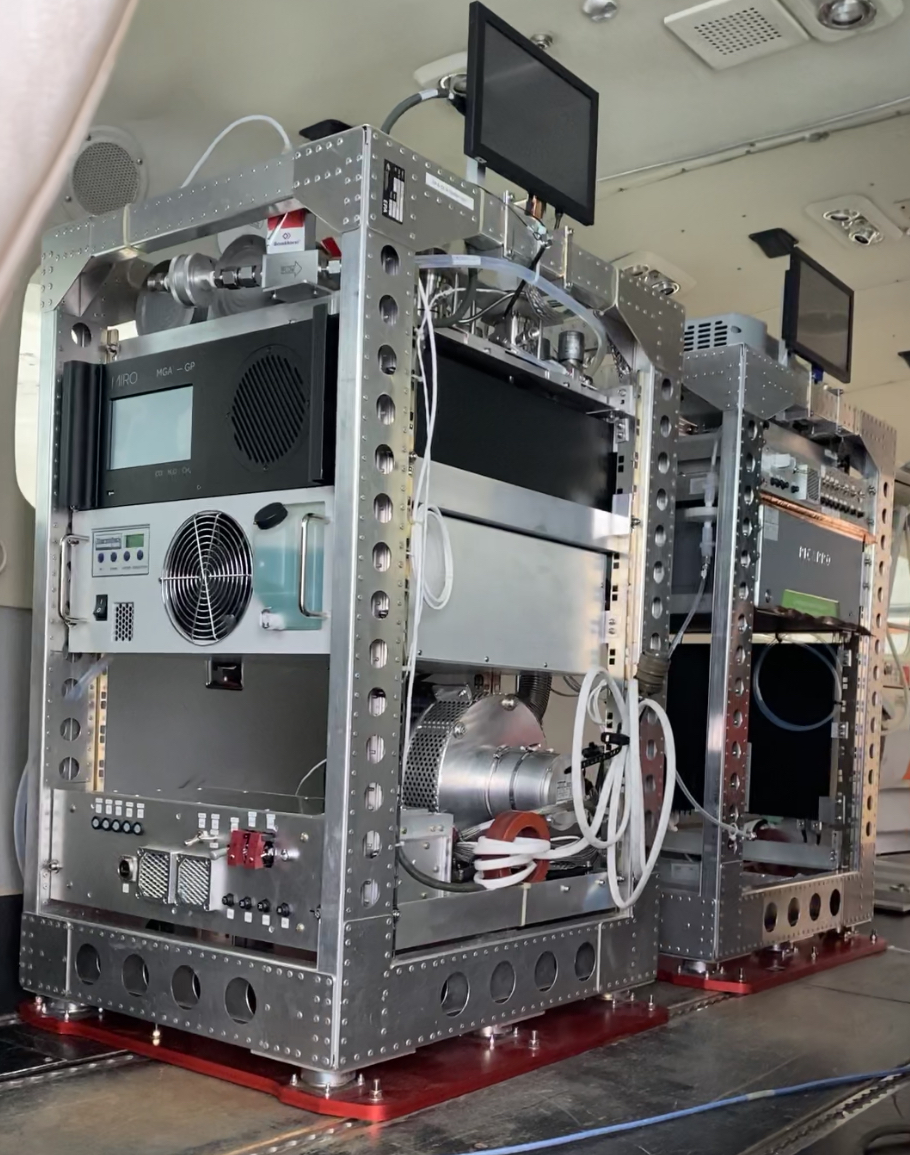In-situ instrumentation: Trace species

At the Institute of Atmospheric Physics, in-situ measurement systems for trace gases are being further developed and optimised for use on various measurement carriers in the atmosphere. The measurement carriers include the DLR research aeroplanes HALO, Falcon and Cessna. Other aircraft are also used for some research tasks, such as a Grob G 520, and a towed probe under a helicopter is used for near-source measurements. Initial experience has also been gained with the measurement of greenhouse gases using drones. This range of measurement carriers is rounded off within the framework of IAGOS-CARIBIC by the use of a trace gas sensor in a container in the cargo hold of a Lufthansa aeroplane.
The measuring instruments are mainly used to investigate three scientific questions:
- Quantification of emissions of long-lived greenhouse gases such as CO2, CH4 and N2O from anthropogenic and natural sources.
- Characterisation of aircraft emissions, e.g. as a function of various types of fuel, including future fuel types.
- Characterisation of the background atmosphere with regard to the origin and pollution of the air masses. The measurements also allow conclusions to be drawn about aerosol formation.
The use on aircraft places special demands on the measuring devices: low weight, fast response time, high precision, low detection limit as well as stability of the measurements with changes in pressure, temperature and humidity. This requires careful selection of the measuring devices in question and their specific adaptation for use on aircraft.
Greenhouse gas measurements are based on the specific absorption of trace gases in the infrared wavelength range in conjunction with direct absorption or cavity ringdown spectroscopy. Ozone is detected by the absorption of UV light and the measurement of CO is based on the principle of vacuum resonance fluorescence. Chemiluminescence detectors are used in conjunction with reduction converters to measure NO, NO2 and the sum of all reactive nitrogen oxide compounds.
Highly sensitive chemical ionisation mass spectrometry (CIMS technology) can detect various trace gases, in particular SO2 and HNO3, by using specific reagent ions. A current further development of mass spectrometers is aimed at measuring heavy ions in aircraft exhaust gases.
In the near future, the measurement of hydrogen by means of mass spectrometry is also envisaged.
